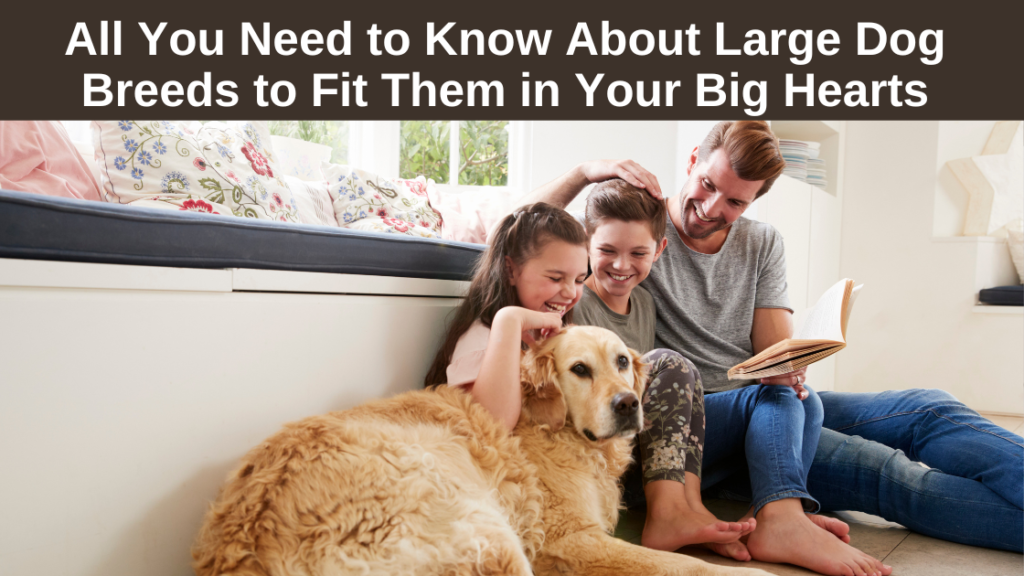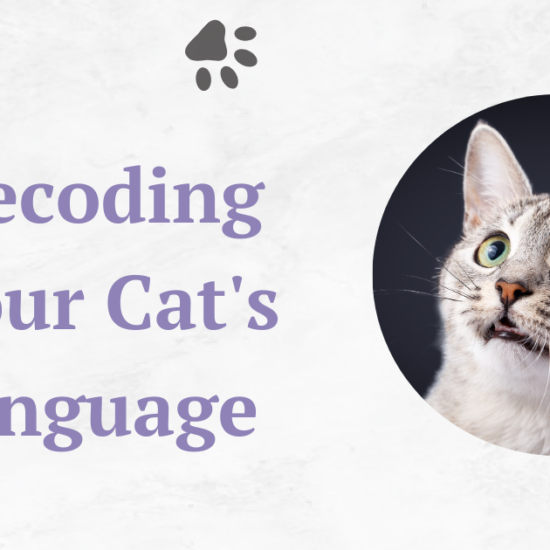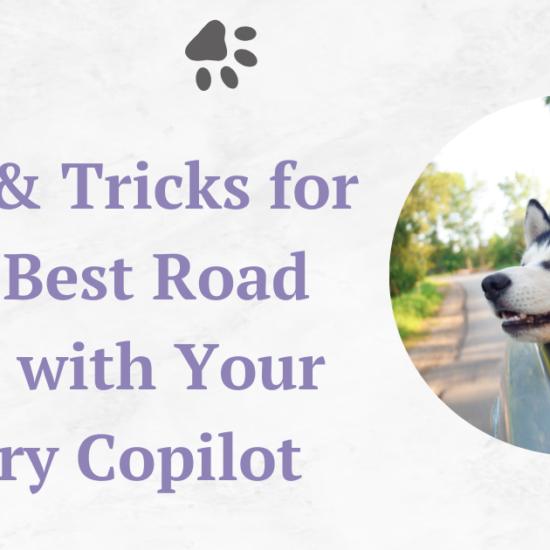Because of their magnificent presence, kind attitude, and extraordinary loyalty, large dog breeds have conquered the hearts of pet lovers all around the world. These gorgeous large dog breeds come in a wide range of shapes, sizes, and temperaments, providing a wide range of possibilities for individuals looking for a huge and beloved companion.
Table of Contents
Introduction
In this comprehensive article, we will delve into the world of the best big dog breeds, studying their distinct qualities, activity needs, grooming requirements, and potential health issues. Whether you are thinking about adding a big dog breed as a majestic companion to your home or simply want to learn more about these impressive breeds, this article will supply you with helpful insights and information.
Understanding Large Dog Breeds
Big dog breeds are majestic companions for humans. Let us elaborate on the advantages associated with large dog breeds.
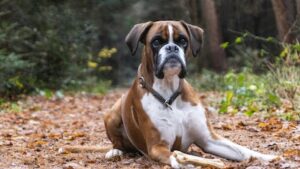
They are Feared Yet Fearful
- Large dog breeds may appear frightening owing to their size and presence, but it’s vital to remember that size does not always reflect temperament and they are capable of being sensitive and fearful just like small dogs.
- Early socialization and training can help alleviate any potential phobias or concerns regarding large dogs.
- Large breeds are noted for their soft personalities and can be quite affectionate and loyal friends.
- Responsible ownership entails recognizing and regulating a huge dog’s physical strength as well as ensuring they behave effectively in public.
- Many people find the intimidating presence of giant dog breeds to be a source of comfort and security since they can serve as effective deterrents to potential invaders.
Temperament Differences
- While giant breeds are generally recognized for being gentle and quiet, it’s vital to remember that individual temperament varies among dogs of all sizes.
- Proper socialization, training, and regular positive reinforcement can help mold the temperament and behavior of a large dog.
- Some large breeds may be predisposed to certain traits, such as being protective, reserved, or hyperactive.
- Understanding the temperamental qualities of the breed you’re interested in might help you decide if it fits your lifestyle and preferences.
- Speaking with breeders, trainers, or experienced owners can provide useful insight into the temperament variances found in various large dog breeds.
The Best Big Dog Breeds
Let’s explore the breed-specific care needs of some of the best big dog breeds.
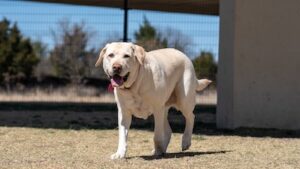
Labrador Retrievers
These gregarious and amiable dogs require frequent exercise to avoid obesity and mental stimulation to keep them entertained. They have a short coat that is easy to keep, but they shed a lot.
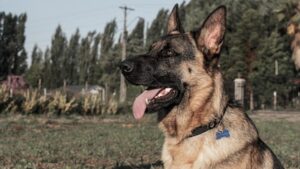 German Shepherd Dogs
German Shepherd Dogs
German Shepherds, known for their intellect and loyalty, require continuous training and mental stimulation. They have a thick double coat that requires regular brushing and baths.
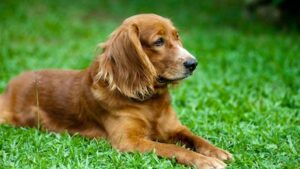
Golden Doodles
These friendly and eager-to-please dogs thrive on human interaction and require plenty of exercise to keep them entertained. They have a dense coat that requires brushing on a regular basis to manage shedding and prevent matting.
 St. Bernard
St. Bernard
Saint Bernard are gentle, calm, and big-haired dog breeds that require modest activity and a cold environment due to their thick coat. Grooming is required on a regular basis to keep their coat clean and tangle-free.
Adaptability to Various Lifestyles
Whether they are non-shedding dogs or hairy ones, there are special considerations for handling large dogs according to various lifestyles.
 Families with Children
Families with Children
Labradors and Golden Retrievers are popular big dog breeds as majestic companions for families with children because of their kind and tolerant personalities. Although these breeds are often kind and tolerant, careful supervision and training youngsters how to interact with dogs are essential.
People With Athletic Lifestyle
German Shepherds are extremely trainable and excel in a variety of activities, including obedience, agility, and even search and rescue. Their intelligence and athleticism make them ideal companions for energetic people who like outdoor activities.
People With Small Living Space
Large breeds, such as Great Danes and Mastiffs, may be better suited for those who live in apartments or small spaces because they require less activity and are generally quiet indoors.
However, it is critical that they should at least continue to receive regular exercise and mental stimulation.
Personality and Temperament
Let us elaborate on some general characteristics and behaviors of large dog breeds.
- Loyalty: Large dog breeds frequently create close ties with their owners and families, displaying steadfast devotion and protective instincts.
- Protectiveness: Many large breeds have a natural need to protect their family and territory, making them excellent guard dogs.
- Intelligence: Large dogs are frequently intelligent and trainable, making them ideal for a variety of tasks and activities.
- Socialization Requirements: Large breeds require early socialization to ensure they are comfortable and well-behaved in a variety of contexts and with other people and animals.
- Levels of Energy: While certain large breeds are noted for having a high level of energy, others have a more moderate or even low level of energy.
Understanding a breed’s energy level is critical for meeting their exercise needs correctly.
Tips for Handling Large Dog Breeds
If you are thinking of adopting a big dog breed, there are some special considerations you must keep in mind. Refer to the following points for details:
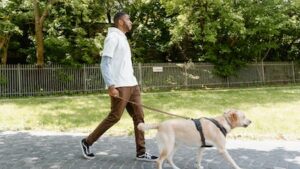
- Physical Power: Large breeds have significant physical power, which necessitates careful handling and control on walks and interactions with other dogs or people.
- Training: Because of their size and power, large breeds require extensive training to ensure they respond to directions, walk quietly on a leash, and demonstrate proper behavior in a variety of scenarios.
- Socialization: From an early age, exposing huge dogs to different places, people, and other animals helps them develop good manners and lowers the possibility of fear or aggressiveness issues.
- Consistency and leadership: Large breeds sometimes thrive in the presence of a self-assured and steady owner who provides clear rules and boundaries.
Exercise and Training
Some special considerations for large dog handling during exercise and training are mentioned below.
Physical Activity Requirements
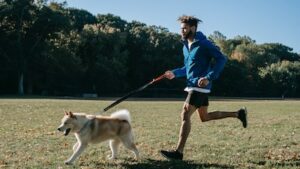
- Daily Physical Activity: To keep them physically and mentally occupied, many large breeds require at least an hour of moderate to severe activity per day.
- Walking and running: Regular walks, jogs, or runs help them meet their fitness needs while also giving them an outlet for their energy.
- Stimulation of the Mind: Large breeds benefit from mental stimulation activities such as puzzle toys, obedience training, and interactive play sessions, in addition to physical activity.
- Breed Differences: Some large breeds, such as the Great Dane, have reduced activity requirements and are alright with shorter, less intensive workouts. Understanding the individual demands of the breed you select is critical for avoiding behavioral difficulties caused by insufficient exercise.
- Use of Positive Reinforcement: Positive reinforcement strategies like treats, praise, and prizes are extremely beneficial in training large dog breeds. This method promotes positive behavior and deepens the link between the dog and the owner.
- Obedience Instruction: Large breeds excel in obedience training due to their intelligence and eagerness to please. Training sessions that are consistent and patient can help them learn and respond to commands more reliably.
- Socialization Instruction: Early and continued socializing with other dogs, animals, and environments benefits large breeds considerably. This instruction assists children in becoming well-adjusted and confident in a variety of scenarios.
Grooming Needs
Let’s explore the grooming requirements according to the coat types of big, hairy dog breeds as well as non-shedding dogs.
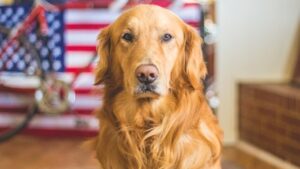
- Breeds with two coats: Dogs with double coats, such as the German Shepherd and Siberian Husky, require regular brushing to prevent matting and control shedding during seasonal coat changes.
- Long-haired dogs: Long, dense coats on breeds like the Newfoundland and Bernese Mountain Dog necessitate rigorous cleaning to preserve their look and prevent knots and matting.
- Short-haired dogs: Dogs with short coats, such as the Boxer and Doberman Pinscher, require less care and less brushing to keep their coats in good shape. These are popular as large, non-shedding dogs due to their low or mild shedding.
- Considerations for coats: Because of their unique coat characteristics, some breeds, such as the Poodle and Bichon Frise, necessitate professional grooming, which may include frequent haircuts and specialized care.
Maintenance Procedures
Some special considerations for handling large dogs on a daily basis are mentioned below.
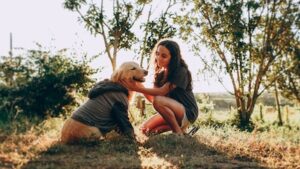
- Brushing on a regular basis: Most large breeds benefit from brushing on a regular basis to keep their coats clean, eliminate loose hair, and reduce shedding around the house.
- Bathing: Bathing large breeds on a needed basis is often necessary to keep their coats and skin clean and healthy. Bathing frequency is determined by the breed, activity level, and individual needs.
- Trimming Nails: Large breeds require regular nail trimming since their fast-growing nails can become painful or cause problems if left unchecked.
- Dental Services: Proper dental hygiene, including frequent tooth cleaning and dental check-ups, is essential for large breeds to avoid dental disorders and maintain general health.
Possible Health Risks

Some of the common health risks associated with large dog breeds are listed below.
- Elbow and hip dysplasia: These orthopedic disorders, which can cause discomfort, lameness, and mobility concerns in large breeds, are more common in them. Early screening and responsible breeding techniques can help reduce the occurrence of these illnesses.
- Bloat: Bloat is a potentially fatal illness that affects large, deep-chested breeds like the Great Dane and Weimaraner. Smaller, more frequent meals and avoiding strenuous exercise after meals can help lower the risk.
- Heart Problems: Certain large breeds, such as the Boxer and Irish Wolfhound, are predisposed to cardiac disorders such as dilated cardiomyopathy. Early detection and management can be aided by regular veterinary checkups and diagnostic procedures.
- Cancer: Large breeds are more likely to get certain types of cancer. Regular veterinary visits, as well as being aware of common signs and symptoms, can help with early diagnosis and treatment.
Preventive Actions
Some of the major preventive actions you should take for large-breed dogs are as follows:
- Veterinary Care on a Regular Basis: Routine check-ups, vaccines, and parasite prevention treatments are critical for keeping a large dog healthy and spotting any possible problems early.
- A well-balanced diet: Feeding large breeds a nutritionally balanced diet can help promote their overall health and lower the risk of certain illnesses. A veterinarian’s consultation helps verify that your dog is on the proper diet.
- Weight Control: Obesity is a major issue in large breeds, and it can exacerbate a variety of health issues. It is critical to maintain a healthy weight with adequate food and regular exercise.
- Breeding with Integrity: Selecting a reputable breeder that prioritizes their dogs’ health and well-being will help reduce the danger of inheriting hereditary disorders. Obtaining health clearances and studying the breeder’s methods are critical first steps.
Large Dogs and Family Life
Regarding children’s compatibility with big dog breeds, you should consider the following aspects:
The Gentle Giants: Many large breeds, including the Newfoundland and Great Pyrenees, are recognized for being kind and tolerant, making them excellent companions for children.
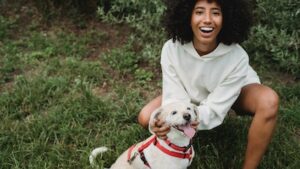 Supervision: When youngsters engage with huge dogs, regardless of breed, supervision is essential to avoid any unintended harm to either party. It is critical to teach youngsters how to approach, handle, and appreciate dogs.
Supervision: When youngsters engage with huge dogs, regardless of breed, supervision is essential to avoid any unintended harm to either party. It is critical to teach youngsters how to approach, handle, and appreciate dogs.
Dimensional Considerations: Larger dogs may accidentally knock down little children; therefore, families with toddlers or young children should choose a breed that is appropriate for their family dynamics.
Considerations for living space for big dog breeds are as follows:
- Physical Space Requirements: Large breeds, in general, require a lot of space to move around in, both indoors and outdoors. It is advantageous to have a fenced yard or access to neighboring parks for exercise.
- Apartment Life: While certain large breeds can live in apartments, it is critical that their exercise demands are met through regular walks, visits to dog parks, or other acceptable physical activity alternatives.
- Noise and Neighbor Concerns: Large breeds may have a deeper bark that is louder and may bother neighbors in close quarters. Excessive barking can be managed with proper training.
Adoption and Responsible Ownership
While choosing a breeder, keep the following points in mind:

- Research: It is critical to thoroughly examine potential breeders to verify that they prioritize the health, temperament, and well-being of their dogs. Reading reviews, touring their facilities, and meeting the parent dogs can all provide useful information.
- Medical clearances: Responsible breeders undertake health exams and tests on their breeding canines to reduce the possibility of genetic health issues being passed on. It is critical to obtain health clearances for breed-specific examinations.
- Owner-Breeder Relationship: Developing a positive relationship with the breeder can help provide continuing support, direction, and a resource for any issues or concerns that may emerge.
- Volunteer Rescue Organizations: Many shelters and rescue organizations offer large-breed dogs available for adoption, giving you the opportunity to give a dog in need a loving home.
- Behavioral and health evaluations: Reputable rescue groups frequently undertake behavioral and health exams in order to provide information about a dog’s temperament, behavior, and any underlying medical concerns.
- Adoption Prerequisites: Adoption criteria from shelters and rescues may include home visits, reference checks, or adoption fees. These precautions are designed to guarantee that the dog and adoptive family are a good match.
Always practice responsible ownership by following the parameters mentioned below.
- Commitment: Large breeds typically live longer lives, and owning a dog requires a long-term commitment. Before adopting a large dog into your life, you should think about the financial, time, and lifestyle ramifications.
- Physical Activity and Mental Stimulation: It is critical to meet a huge dog’s activity and mental stimulation needs. Regular physical activity and mental stimulation help to prevent boredom-related behaviors.
- Education and Socialization: Consistent training and socialization chances from an early age aid in the development of well-mannered, confident, and adaptable companions in giant dogs.
- Adequate Nutrition: A balanced and adequate diet for a large breed’s specific nutritional needs promotes general health and aids in the prevention of weight-related disorders.
Remember that the preceding points are only an expansion of the initial points offered, and it is always necessary to perform additional study and contact with professionals, such as breeders and veterinarians, when contemplating a large dog breed for adoption or purchase.
FAQs
Can giant dog breeds be used in families with children?
Yes, many large breeds, such as Labradors and Golden Retrievers, are recognized for their kind and tolerant nature, making them ideal family pets.
Do big dog breeds need a lot of exercise?
Yes, most large breeds have a lot of energy and need at least an hour of moderate to strenuous physical activity per day to keep them cognitively and physically occupied.
How easy are huge dog breeds to train?
Large breeds are frequently intelligent and trainable. They can learn and obey commands reliably with persistent training and positive reward.
How frequently do huge dog breeds require grooming?
The grooming requirements differ depending on the coat type. To prevent matting, double-coated dogs must be brushed on a regular basis, whilst long-haired types must be cleaned more thoroughly.
What are some of the most common health hazards associated with giant dog breeds?
Large breeds are prone to elbow and hip dysplasia, bloat, cardiac problems, and some types of cancer. Early detection and management require regular veterinary care.
Can huge dog breeds live in small spaces?
Because they require less exercise and are normally calm indoors, some huge breeds, such as Great Danes and Mastiffs, can adapt to tiny living areas. Regular exercise, on the other hand, is still essential.
How can I assure that I am a responsible dog owner of a huge dog breed?
Regular veterinarian care, a well-balanced food, weight control, training, socialization, and providing a proper living environment for the breed are all part of responsible ownership.
Should I adopt or purchase a huge dog breed?
Both alternatives are viable. Adopting from a shelter or rescue group provides a loving home for a dog in need, whereas purchasing from reputable breeders insures the dog’s health and well-being.
How do I select the best dog breed for my lifestyle?
Consider your energy level, temperament, workout requirements, grooming demands, and compatibility with children or apartment living. Research, breeders, and specialists can all contribute useful information.
What are the advantages of owning a huge dog breed?
Large breeds provide devotion, protection, intelligence, and a one-of-a-kind friendship experience. They can bring comfort and security, as well as becoming treasured family members.
Conclusion
Large dog breeds provide a one-of-a-kind blend of size, beauty, and companionship. This comprehensive guide provides readers with the knowledge they need to make an informed decision about which large dog breed is right for them. Potential owners may assure responsible ownership and give the best possible care for their huge four-legged friends by recognizing the special needs, traits, and potential issues of large dog breeds. Accept this magnificent trip with open arms, and you will be rewarded with a lifelong friendship that is both incredible and unforgettable.


